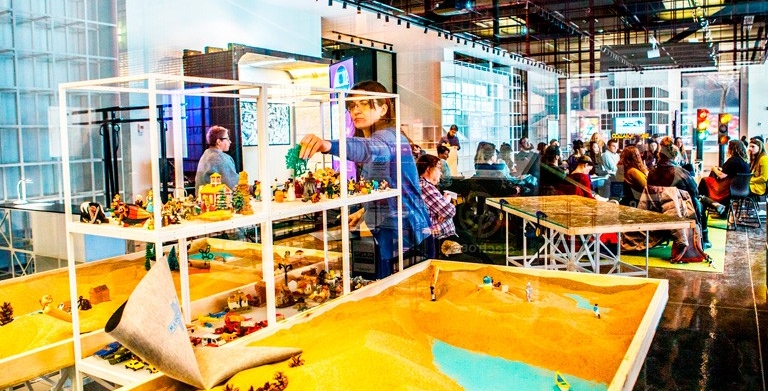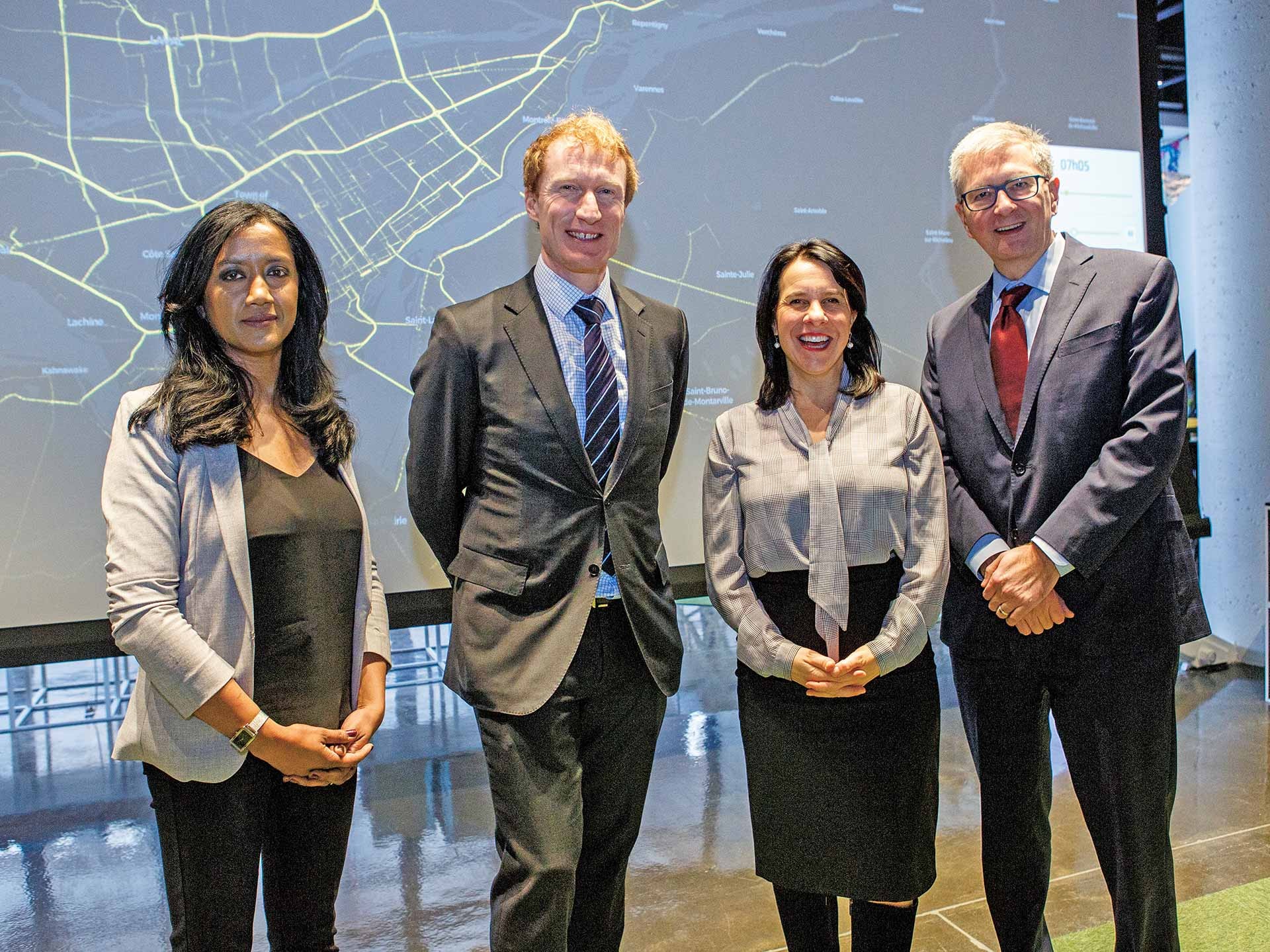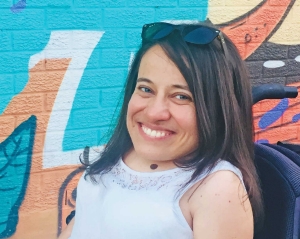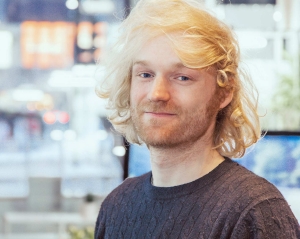4TH SPACE will set a new standard in accessible knowledge. Powlowski emphasizes the “by-product”of these non-traditional approaches to accessing knowledge. “It benefits our researchers and faculty members to explain things to non-specialists outside of academia, to students and to the public at large,” he says. “They spend so much time alone during their research, in their labs. This approach allows them to think outside the box and branch out as well. It’s also the reason why the space was intentionally created on street level with high visibility to those passing by.”
Vibrating to the beat of a different drum
In December 2018, 4TH SPACE featured the Vibrations artistic project. It brought together deaf and disabled artists to co-produce artworks that explore our sensorial relationships to the world through vibration and touch. It focused on how artistic creation can contribute to challenging ableism — discrimination against disabled people — and audism — the belief that hearing people are superior to deaf people. The exhibition ran simultaneously in Montreal and East London, United Kingdom
One of the partners in Vibrations, Laurence Parent, is completing her PhD in humanities at Concordia. She holds an MA in critical disability studies and her work and activism focus on disabled Montrealers and everyday barriers to mobility. Parent, who started using a wheelchair at the age of five, has spent the last decade exposing how inaccessible Montreal’s public transit system can be for people with disabilities. Even though she’s written a thesis on the subject, the visual component of her research was extremely important to her.
“Having access to a venue like 4TH SPACE is wonderful because platforms where we can present non-traditional work are very limited,” Parent says. “Furthermore, wheelchair-accessible spaces are rare in Montreal. I think it’s extremely important to make academic research more accessible to the public and 4TH SPACE will certainly contribute to that.”
Parent hopes the venue will become a space where academics, artists and community members will meet to work together on projects that are meaningful and have potential to effect real change in people’s lives.
Samuel Thulin, MA (comm. studies) 09 — Horizon Postdoctoral Fellow in the Department of Communication Studies and a researcher/artist at Concordia’s Milieux Institute for Arts, Culture and Technology — was also a partner of the Vibrations exhibition. The research team, he says, went to great lengths to look at all aspects of accessibility for both the show and the venue.
 4TH SPACE is located on the ground floor of the J. W. McConnell Building on the corner of De Maisonneuve Blvd. and Mackay St.
4TH SPACE is located on the ground floor of the J. W. McConnell Building on the corner of De Maisonneuve Blvd. and Mackay St.
 Nadia Bhuiyan (left), Concordia’s vice-provost of Partnerships and Experiential Learning, and her team spearheaded the university’s new 4TH SPACE. She is pictured with Canadian Member of Parliament Marc Miller, Montreal Mayor Valérie Plante and Concordia President Alan Shepard at the public launch in January 2019.
Nadia Bhuiyan (left), Concordia’s vice-provost of Partnerships and Experiential Learning, and her team spearheaded the university’s new 4TH SPACE. She is pictured with Canadian Member of Parliament Marc Miller, Montreal Mayor Valérie Plante and Concordia President Alan Shepard at the public launch in January 2019.
 Laurence Parent, a partner in 4TH SPACE’s Vibrations exhibition, praises the venue’s accessibility — including wheelchair-accessibility — to the public.
Laurence Parent, a partner in 4TH SPACE’s Vibrations exhibition, praises the venue’s accessibility — including wheelchair-accessibility — to the public.
 Samuel Thulin is a Horizon Postdoctoral Fellow in Concordia’s Department of Communication Studies and was a partner in 4TH SPACE’s Vibrations exhibition.
Samuel Thulin is a Horizon Postdoctoral Fellow in Concordia’s Department of Communication Studies and was a partner in 4TH SPACE’s Vibrations exhibition.